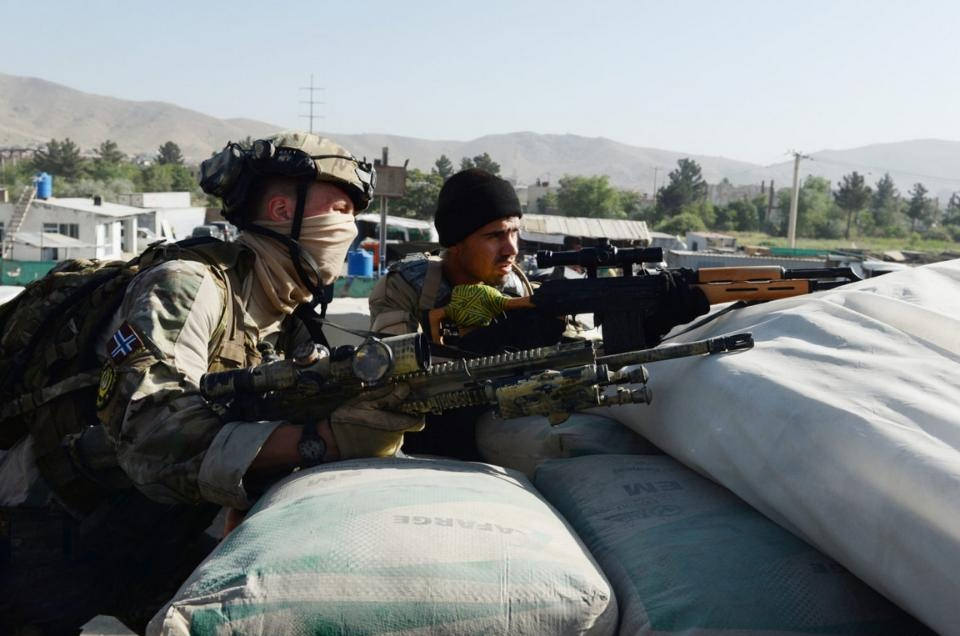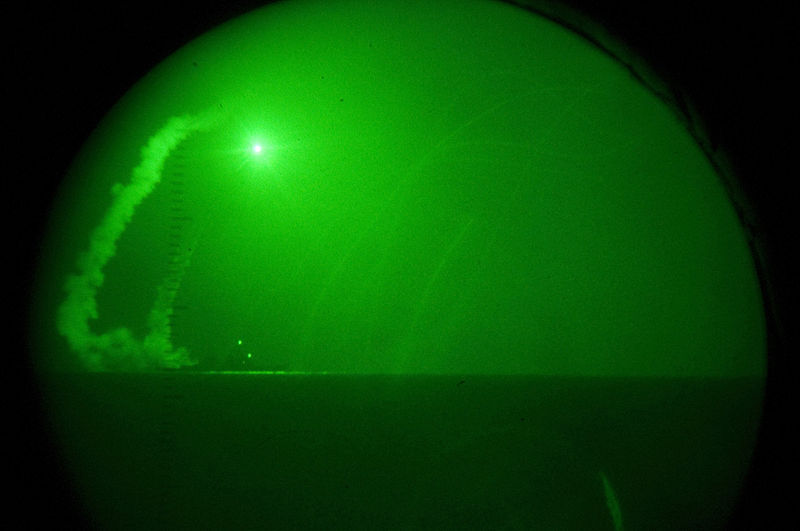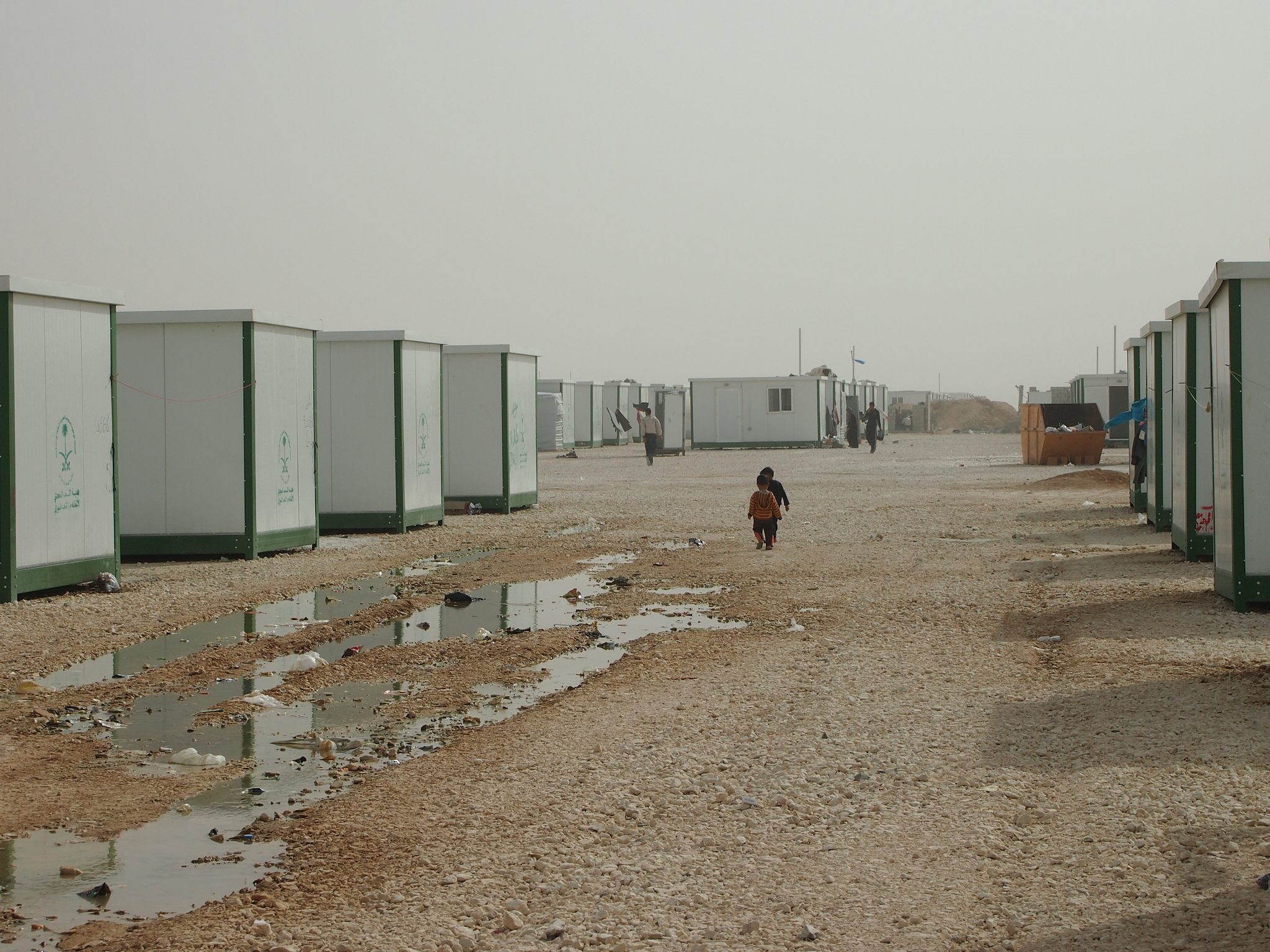
AlexAK, who commented on our “Would Someone Please Explain This to Me?” post, asked this question:
Do you agree that the recent decline in inter-state warfare (and as some claim all kinds of warfare) (aka Pinker/Goldstein…) is a result of the transformation of war (as argue Shaw, Kaldor, etc.)? (and not a result of democratic peace, nuclear weapons, unipolarity, etc. –> theories that view war as a constant).- If so, is the main culprit that opened up these new spaces of violence really found in the economic sphere (aka economic globalization –> weakening of the state) as Kaldor, etc. claim? Could one not make an equal claim that this is the result of technological, political, judicial, moral, religious, changes?
A good question that might require a dissertation-length answer. Lemme try to square the circle that has Dick Cheney telling Politico that, “The world’s not getting safer, it’s getting far more dangerous,” at the same time that there is a cottage industry of new books proclaiming “peace in our time” and that war is over. So which is it?
Let’s review: Incidents of terrorism are thought to be on the increase, but Pape and others challenge the validity of the government-sponsored data. Looking at war, the overwhelming bulk of conflicts remain internal or irregular, which explains the renewed attention among academics and policymakers to civil war studies (and blogs like this one). Last year, for instance, there were zero interstate conflicts but 24 intrastate conflicts, according to Uppsala Conflict Data Program data. A few analysts have pointed to a new kind of warfare. Call it what you will: John Schindler refers to it as “special war,” Mary Kaldor calls them “new wars,” and John Nagl has dubbed them “knife fights.” Most observers describe it as a kind of “hybrid warfare” that is asymmetric, legally messy, involving targeted killings, Special Force units, chemical weapons, terrorism, cyber warfare, and other indirect means to achieve ends that are anything but clear-cut. Regardless, we can expect such types of conflicts to be more frequent in the future (see here and here). Of the 41 lethal uses of force – or what Micah Zenko calls a discrete militarized operation (DMO) – by the US between 1990 and 2010, all but five were against nonstate actors.
So what do IR theorists have to say about all these trends, if anything? Many scholars have struggled to account for, much less code, these new types of war. From a social scientist’s perspective, many of these so-called “new wars” can get lost in the data, given the unconventional style in which they’re fought. As James Fearon asked last year in the Monkey Cage, “Is the US fighting one war, or four?” It’s made murkier by the fact that states no longer formally declare war, for reasons Tanisha Fazal outlines here. The prevailing wisdom points to the distribution of power within the system as accounting for the decline of interstate violence (Wolhforth and Monteiro outline these contrasting views nicely). A few chalk up the decline to the spread of democracies or the presence of Golden Arches. John Mueller has pointed to the public’s revulsion of war as an “idea” of settling disputes, much as slavery and dueling became seen as abhorrent and outdated (a notion Christopher Coker, among others, has challenged).
Moreover, there is widespread skepticism within the field of some of the theories advanced by Pinker et al., about the decline of violence throughout history (Pinker more or less chalks it up to a “pacification process”; Goldstein points to the success of peacekeeping, whereas Gat says peace has just gotten more profitable; Fry says that war is an aberration; Morris argues just the opposite). At least one prominent political scientist/anthropologist I know called Pinker’s theories complete bunk!
So then what explains the relatively sharp drop-off in fighting between states, and might the events of the past year (Crimea, Syria, Iraq, eastern Ukraine) presage the reverse of this recent trend? That is, are we on the precipice of this century’s Norman Angell moment? Doubtful. Russia’s latest military forays into Ukraine have come at the expense of its economy. Ditto China and its military maneuvers in the South China Sea. This is not to say that economic interdependence is not an important variable. But, if anything, the rise of countries like the BRICS should correspond with a rise of incursions and other “hybrid conflicts,” not a decline (by some counts, China violated Indian sovereignty by as many as 400 times over the past few years). Throw drones into the mix – over 70 states now possess some kind of lethal drone technology – and you have a recipe for more conflict ahead.
Maybe we’ll see less escalation because of mechanisms outlined by Kaldor (and Angell over 100 years ago) related to globalization, the presence of peacekeepers, or more robust international norms prohibiting the use of force (the non-use of a drone by China in 2011 against a Burmese drug lord in the Golden Triangle is an encouraging sign). Moreover, some analysts might conclude that as we move toward a more multipolar world, we can expect more interventions and, by extension, more conflicts. By contrast, I would argue that war is not becoming obsolete, but it is changing. “Winning” does not tend to lead to land grabs or looting of resources (Crimea aside). Interventions are increasingly limited in nature and carried out in the name of “self-defense.” (To be sure, this is not a new trend per se, as Cold War-era interventions by India in Bangladesh, Vietnam in Cambodia, and Tanzania in Uganda suggest. But data I am collecting suggests that incursions against non-state actors are more likely than previous decades.)
I hate to say it, but this may be the one time when Dick Cheney was right.
Updated to reflect the fact that according to Micah Zenko, the US has used lethal force in 41, not 45 as the post originally stated, DMO’s between 1990 and 2010.








1 comment
Hello,
I’m a big fan of this blog, but I find this post unreasonably confusing. I’ve read it three times to understand it, but no luck yet. (I will preface this by saying I’m not a political scientist, but I don’t think this blog is intended to speak ONLY to political scientists so hopefully my views are still relevant.)
You seem to be assessing whether or not Dick Cheney is right that “The world’s not getting safer, it’s getting far more dangerous.” You start by saying terrorism is probably rising, but we can’t say for sure (Page). You then say there is a new type of conflict and that we should expect to be more common in the future. But your only explanation for why we expect that is a link to 1) a dataset’s ICPSR page, and 2) a book. Can you please briefly summarize why we expect a rise?
You then say that these new conflicts are really hard to code, so we don’t have good data. Then you summarize several IR theories for the decline of interstate war. You then say that there are lots of alternatives to Pinker’s theory for the decline of violence throughout history and that some think Pinker’s theories are “complete bunk” (note that you do not say why they are bunk). But, importantly, the IR theories on interstate war, Pinker’s theories on history, and the alternatives to Pinker’s theories all imply a decline in conflict/violence/war. Don’t they?
You then note several recent conflicts that occurred despite having negative economic consequences and conclude that the rise of BRIC-like countries implies a likely rise in hybrid violence. I don’t follow this at all. Do China’s incursions into India imply a wave of new violence? Is 400 a lot? They’re big countries — 400 implies that annual incursions per capita is quite low. To me, 400 incursions without leading to a massive outbreak of war is encouraging. This wasn’t responded to with large scale India-China violence. In historical context, the number of deaths resulting from these 400 incidents is probably incredibly low.
You say maybe we’ll see less escalation of conflict then say “Moreover, … we can expect… more conflicts.” I don’t understand? Less escalation implies more conflicts? Then you say war is changing and that incursions against non-state actors is becoming more common.
The most confusing part is that you conclude that Cheney was right. I don’t understand how any of your arguments imply this. Most of the post is reviewing theories for why conflict is declining (and none of these conflicting theories seem to imply that it isn’t). The few areas where you suggest rising conflict (new types of wars, terrorism), you say we have incomplete data and it’s too early to tell. You acknowledge the complication in coding these conflicts. Is your support for the Cheney claim simply saying that once all the dust has settled about how to code these things, you expect a rise in the number of coded conflicts/incidents? That doesn’t seem at all related to the Cheney-Pinker juxtaposition. Cheney says the world is getting more dangerous and less safe. Pinker disagrees saying there’s a decline in violence (e.g., the fraction of deaths that are violent). It doesn’t seem like a rise in coded incidents of “cyber warfare” (for instance) is evidence of Cheney over Pinker. A “more dangerous” world has more violent deaths, not more coded incidents.
In conclusion, it’s not at all clear to me why your points imply that Cheney is right. You give a lot of well-explained arguments for declining conflict/violence, but the few times you suggest increases you don’t explain why you expect this increase (new types of conflict, BRIC countries). Am I totally missing something?